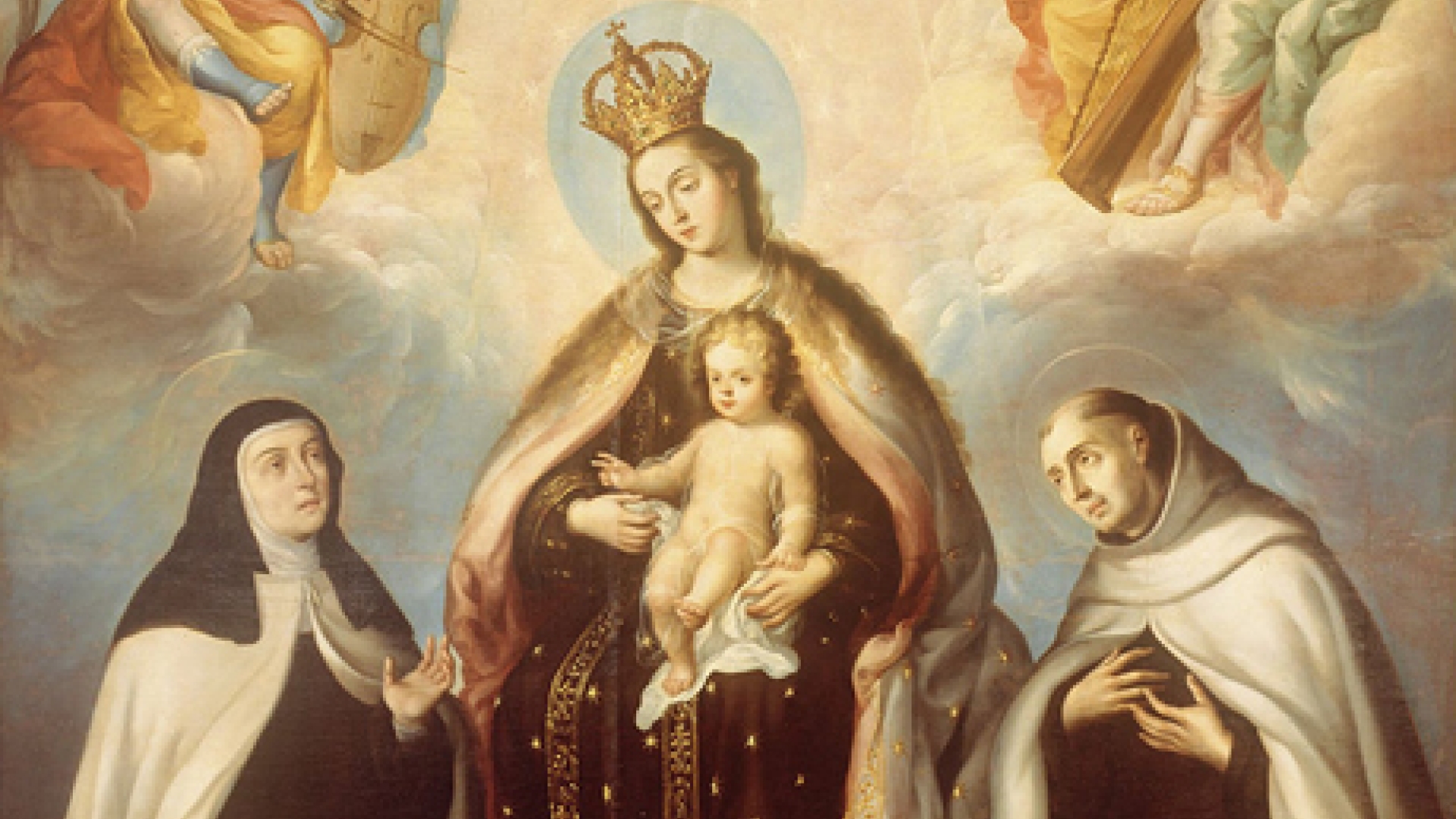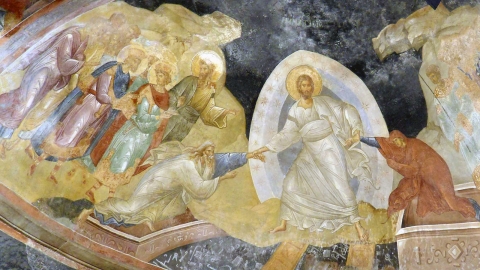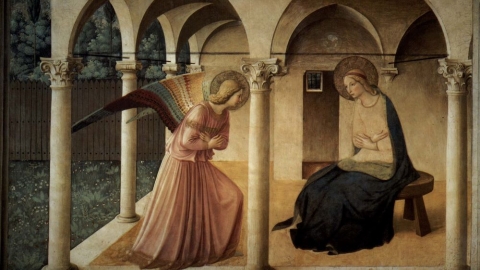A True Lover of the Cross

A study of St. John of the Cross, a Spanish mystic, Carmelite friar and a priest, Doctor of the Church, and a major figure of the Counter-Reformation.
St. John of the Cross is known for his strength, piety, writings, and as founder with St. Teresa of Avila of the reformed Carmelite order.
During the pilgrimage “Fatima to Lourdes via Catholic Shrines of Spain,” which is scheduled for August 17-28, 2017, pilgrims will have the privilege of visiting the Monastery of the Discalced Carmelites, burial place of St. John of the Cross, and La Santa Cueva, the cave where St. Dominic spent time praying and doing penance near the site where he founded the first Spanish Dominican monastery.
This 12-day pilgrimage also includes three days in Fatima to participate in the official SSPX festivities for the 100th anniversary of the apparitions of Our Lady to the three shepherd children. A few seats are still available. For more information on this pilgrimage, please visit their site or contact Regina Pilgrimages at (866) 369-8149.
His Youth and Entrance into the Carmelite Order
He was born Juan de Yepes y Alvarez to Gonzalo de Yepes and Catherine Alvarez, in the year 1542 in Fontiveros, Spain. Having married “beneath him,” his father was disinherited and had to earn his living as a silk-weaver. On his death, his wife was left destitute with three children, of whom John was the youngest. He went to a poor-school at Medina del Campo and was then apprenticed to a weaver, but he showed no aptitude for the trade and was taken on as a servant by the governor of the hospital at Medina. He stayed there for seven years, already practicing bodily austerities, and continuing his studies in the college of the Jesuits.
At 21 years of age, he took the religious habit among the Carmelite friars at Medina, receiving the name of John of St. Matthias. After his profession, he asked for and was granted permission to follow the original Carmelite rule, without the mitigations approved by various popes and then accepted in all the friaries. It was St. John’s desire to be a lay brother, but this was refused to him. So when he completed his theological studies, he received the priesthood in 1567. Thereafter, his desire to retire continued to grow and he debated whether to enter the Carthusian order.
Reformation of the Carmelite Order
At that time, St. Teresa of Avila was establishing her reformation of the Carmelite nuns and, coming to Medina del Campo to found the second of her convents, she heard of Brother John. She went to see him and asked him to join her and begin a reformation of the men’s Carmelite Order. Soon after, the first monastery of discalced (i.e., barefoot) Carmelite friars was established in a small and dilapidated house at Duruelo. St. John entered this endeavor in a perfect spirit of sacrifice, and about two months after was joined by two others, who renewed their profession on Advent Sunday, 1568, St. John taking the new religious name of John of the Cross. The fame of the sanctity of this obscure house spread, and a second was established at Pastrana, a third at Mancera, and in 1570 a fourth, at Alcalá, a college of the university, of which St. John was made rector.
His example inspired the religious with a perfect spirit of solitude, humility and mortification, but Almighty God, to purify his heart from all natural weaknesses and attachments, made him pass through the most severe interior and exterior trials. St. John, after tasting the first joys of contemplation, found himself deprived of all sensible devotion. This spiritual dryness was followed by interior trouble of mind, scruples and a disrelish of spiritual exercises, and, while the devil assaulted him with violent temptations, men persecuted him by calumnies. All the while, St. John always remained calm and confident, placing all his trust in the Lord.

Juan Rodríguez Juárez - The Virgin of the Carmen with Saint Theresa and Saint John of the Cross
Tension between the Carmelites
St. John of the Cross was sought out by the secular community as well as religious, and God confirmed his ministry by evident miracles. But grave troubles were arising between the Discalced and the Mitigated Carmelites. The old friars looked on this reformation, though undertaken with the due license and approbation, as a rebellion against their order; on the other hand, some of the Discalced were tactless and exceeded their powers and rights. Moreover, confusing and contradictory policies were pursued by the prior general, the general chapter, and the papal nuncios respectively.
At length, in 1577, when St. John was confessor at the Convent of the Incarnation at Avila, the provincial of Castile ordered him to return to his original friary at Medina. He refused, on the ground that he held his office from the papal nuncio, a higher authority than the Order. Whereupon on the night of December 2, 1577 the Carmelites took him captive and, knowing the veneration which the people of Avila had for him, they removed him to Toledo, where he was pressed to abandon the reform. When he refused, he was locked up in a small cell that had practically no light, and was treated most cruelly, including lashing and an inhumane diet. During this imprisonment, St. John composed a great part of his most famous poem Spiritual Canticle, as well as a few shorter poems.
We are told that nine months later, on the feast of the Assumption, the Blessed Mother appeared to her suffering servant and said, “Be patient, my son. Your trials will soon be over.” And indeed, he miraculously escaped through a small window in a room adjoining his cell.
Continuation of the Reform and His Last Days
After being nursed back to health, St. John continued the reform, and in 1581 Pope Gregory XIII signed a decree authorizing the separation between the Calced and Discalced Carmelites. This same year, the first General Chapter of the Discalced Carmelites was held in Alcalá de Henares. By this time, there were 22 houses, some 300 friars and 200 nuns in the Discalced Carmelites.
More exemplary than anything was St. John’s spirit of suffering and mortification. At times, the austerities which he practiced seemed excessive; he only slept two or three hours at night, employing the rest in prayer before the Blessed Sacrament. Three things he frequently asked of God: that not one day of his life pass without suffering, that he might not die during the office, and that he might end his life in humiliation and contempt.
In 1588 he was elected third Councilor to the Vicar General for the Discalced Carmelites, Father Nicolas Doria in Segovia, where he was also prior of the monastery. After disagreeing with some of Fr. Doria’s remodeling of the leadership of the Discalced Carmelite Order, St. John was removed from his post in Segovia, and sent to an isolated monastery in Andalusia called La Peñuela. Here he spent some months, passing his days in meditation and prayer among the mountains, “for I have less to confess when I am among these rocks than when I am among men”. There he fell ill, and traveled to the monastery at Úbeda for treatment. His condition worsened due to neglect, and even malice, and he died there on December 14, 1591.
Clergy and laity flocked to his funeral. His body was transferred to the Monastery of the Discalced Carmelites in Segovia, the last house of which he had been prior, and where it is still venerated today. St. John of the Cross was canonized in 1726, and in 1926 Pope Pius XI declared him a Doctor of the Catholic Church.
(Excerpts taken from Butler’s Lives of the Saints)
Prayer to St. John of the Cross
O glorious St. John of the Cross, through a pure desire of being like Jesus crucified, you longed for nothing so eagerly as to suffer, to be despised, and to be made little of by all; and your thirst after sufferings was so burning that your noble heart rejoiced in the midst of the cruelest torments and afflictions. Grant, I beseech you, O dear Saint, by the glory which your many sufferings have gained for you, to intercede for me and obtain from God for me a love of suffering, together with strength and grace to bear with firmness of mind all the trials and adversities which are the sure means to the happy attainment of all that awaits me in heaven. Dear Saint, from your most happy place in glory, hear, I beseech you, my prayers, so that after your example, full of love for the cross I may deserve to be your companion in glory. Amen.





